In the fascinating world of entomology, black beetle types offer a remarkable glimpse into nature’s diversity and adaptability.
From the dense pine forests of North America to the serene gardens of our homes, these beetles, varying in size, shape, and habitat, play unique roles in their ecosystems.
In this comprehensive guide, we delve into the characteristics and behaviors of various black beetle types, each distinguished by its unique features and life cycle.
Whether it’s the long antennae of the Sawyer Beetle, the destructive nature of the Black Carpet Beetle, or the stinking defense of the Black Stink Beetle.
Understanding these beetles enriches our knowledge of the natural world and the intricate balance within it.
Types of Black Beetles
1. Sawyer Beetle
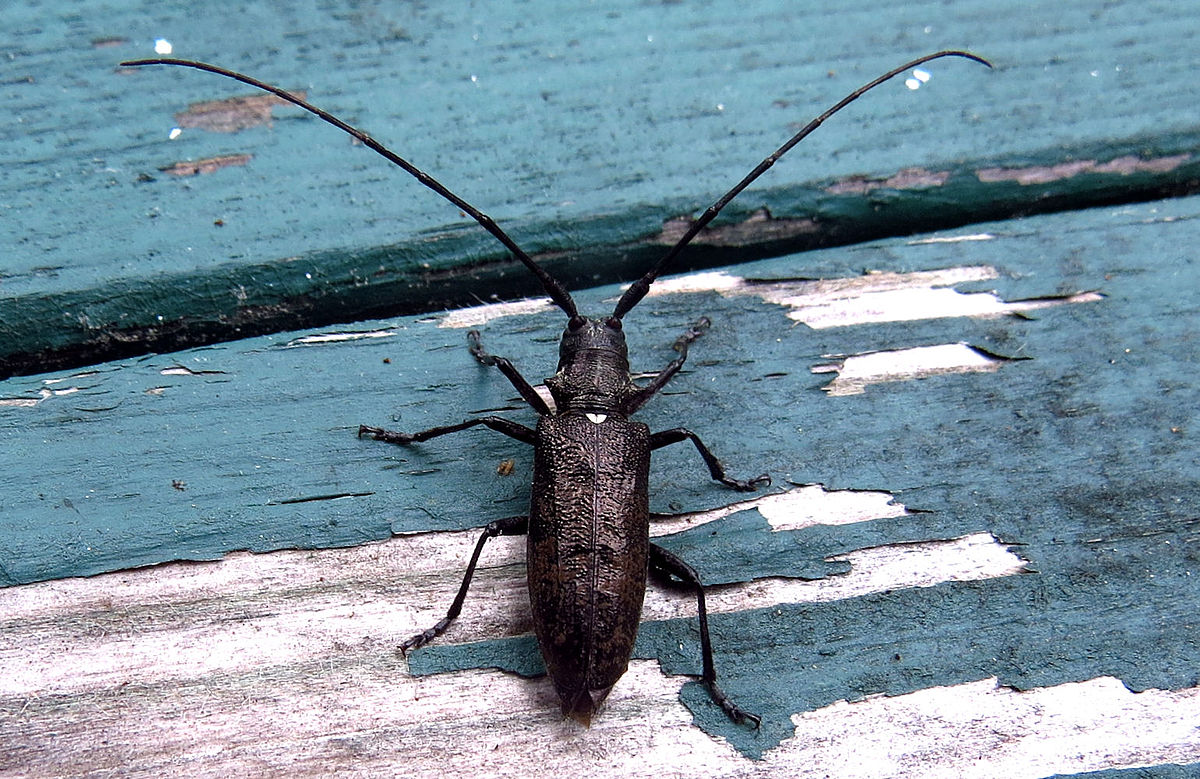
This beetle is also known as the White-Spotted Beetle due to the white and black markings on its wings supporting its long body.
This beetle is approximately 25mm long and is found in North America’s pine forests.
These beetles destroy the timber way before it can be used. The female beetles produce larvae that feed on dead pine wood.
Identification
- This beetle has the most extended antennae on its body, which is why they are a form of longhorn beetle.
- Their antennae can be three times bigger than the length of their body, approximately 75mm.
- This beetle can also be identified with the white markings on its body.
- The white dots can be seen on its wings, and one white, heart-shaped dot near its thorax. They can be seen under the naked eye, too.
2. Red-Lined Carrion Beetle
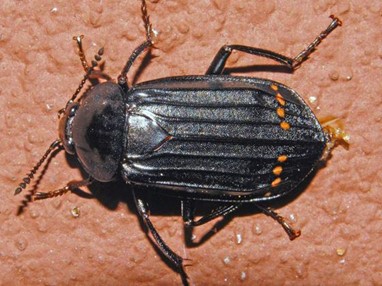
This beetle comes from the Silphidae family and is slightly different from others because its shape differs slightly from most beetles.
It is not oval. Their wings are straight and rounded near the edges.
These beetles have a foul odor that makes them easy to identify, mainly because they feed on larvae that feed on rotten flesh.
Identification
- When this beetle flies, it reveals its orange wings wrapped around its black abdomen.
- It carries a foul odor, which can be an identification point.
- When removing them, wear a mask and cover your nose. Also, they are average-sized beetles, ranging from 12-25mm.
- This beetle’s primary identification is that it has long black wings with an orange shade in them.
3. Cucumber Beetle
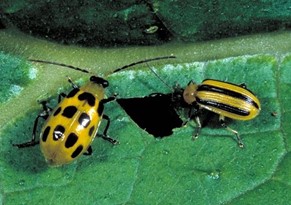
There are two types of cucumber beetle – spotted and striped cucumber beetle.
They both are tiny garden beetles that may appear in your garden.
Do not be fooled by its small size; it is equally destructive as normal-sized beetles.
This beetle belongs to the Chrysomelidae family of beetles. They feed on vegetables like corn, legumes, cucumber, lettuce, etc.
Identification
- You can identify this beetle with the help of the yellowish-greenish markings on its black body.
- The spotted and striped species can be identified through these markings, too.
- This beetle is relatively tiny, weighing about 5mm, which makes another identification point, but do not be fooled by its size; it can cause severe destruction to your plants.
4. Black Carpet Beetle
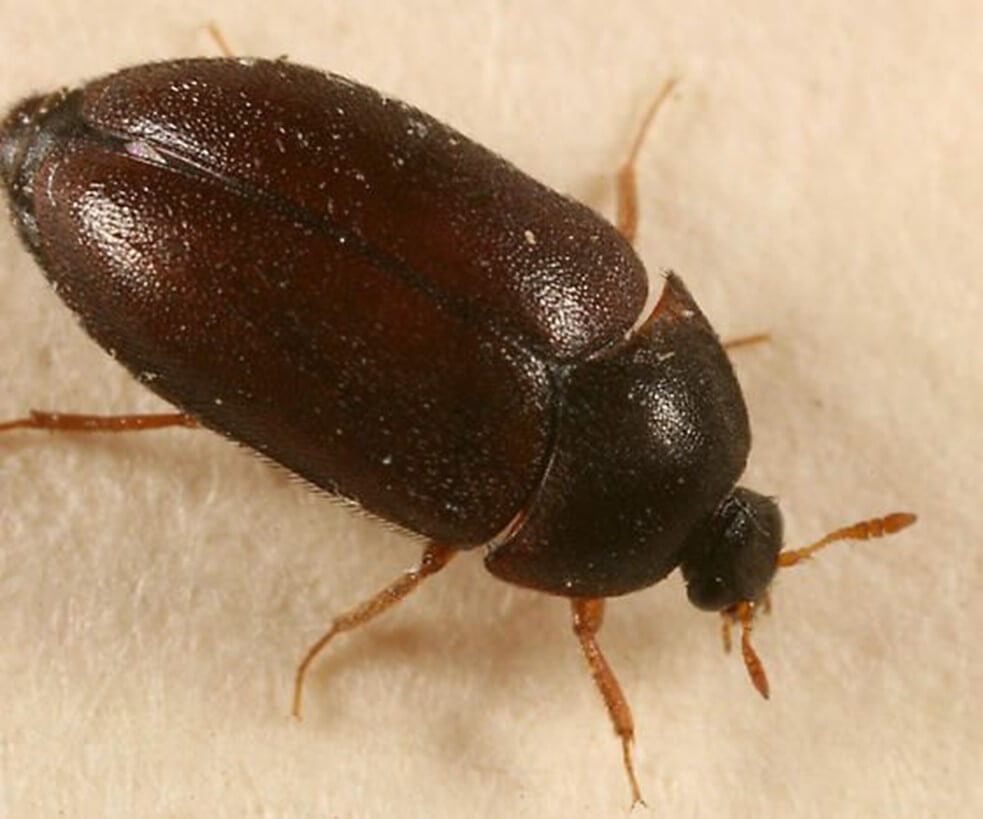
This is one of the most destructive types of beetle; it can destroy your house and cereals, but it does not bite humans. This beetle can fly and crawl around your house.
It is recommended to get rid of adult beetles rather than the young ones, although the larvae cause the most destruction.
This beetle, when growing up, is white, and when it has completely matured, it becomes black.
Identification
- This beetle can generally be seen in any home and measure about 3mm. These beetles can crawl or fly around your house.
- It is one of the most commonly occurring beetles.
- Having short antennae and a short oval-shaped body is another identification of this beetle.
- They are usually dark brown or black, and if you look closely, they have little hairs on them.
5. Furniture Beetle
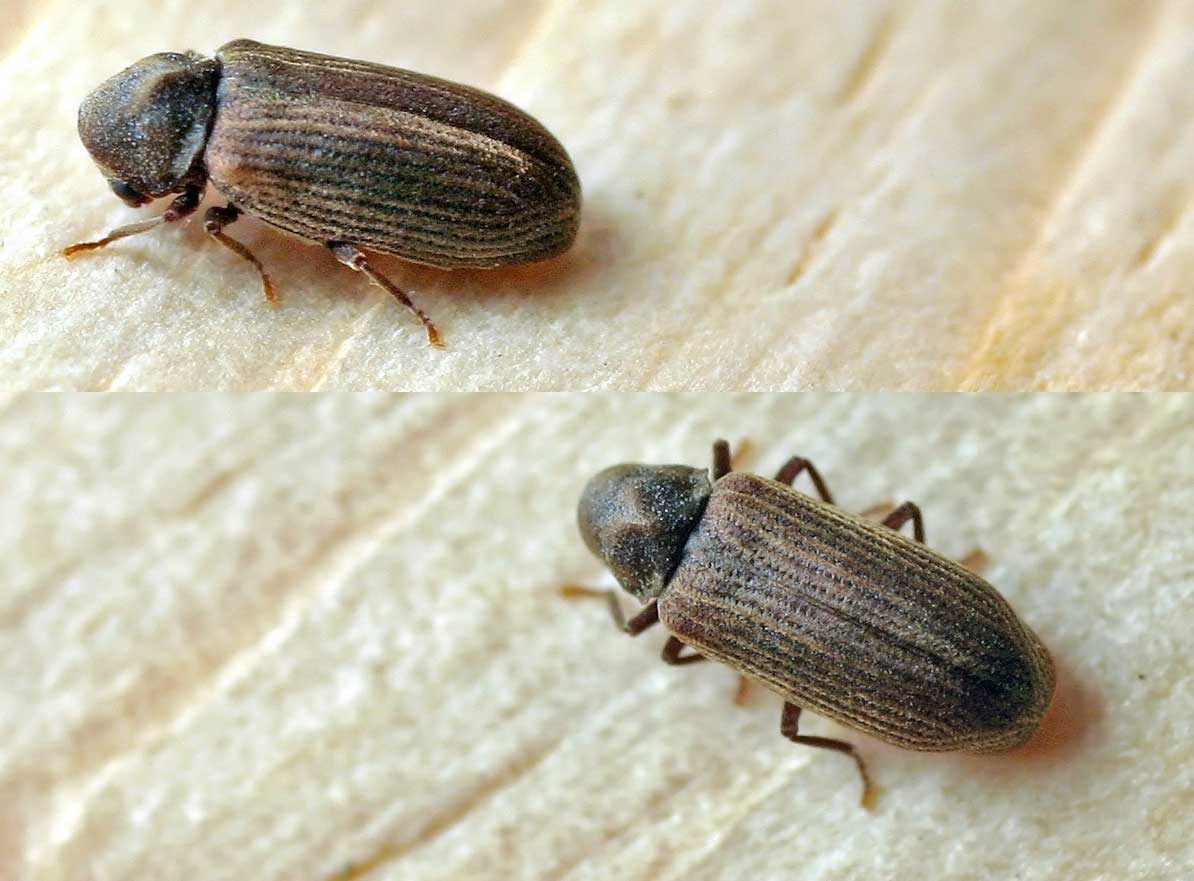
This beetle can damage your wood or any other furniture.
These beetles are responsible for the woodworm in most of the furniture at your home.
It would help if you removed this beetle’s larvae because it destroys the wood.
These can destroy your furniture and make it look disgusting.
Identification
- This is a medium-sized beetle that measures about 2.7-4.5mm.
- These are also known as wood-boring beetles that damage your furniture, crumble wood pieces, near fine dust, and mature beetles come out of the holes.
- This beetle has a round, long black or dark brown body, near to light brown color, with two antennae on their head and stiff black wings.
- You can easily spot them on black furniture, and it might be challenging to spot them on brown furniture.
6. African Black Beetle
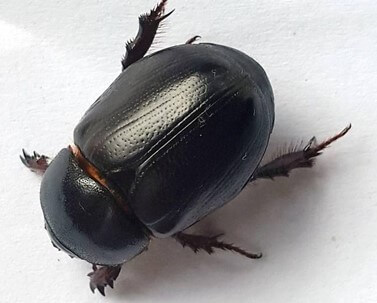
The African Beetle does not affect your home. Rather, it affects your surroundings.
These beetles can be found through the brown markings they leave behind when roaming around here and there.
These are native to Africa and common agricultural pests in Australia and New Zealand. They can destroy your grass as well as plants.
Identification
- These beetles measure around 12-15mm long and are commonly known as black lawn beetles since they can destroy your grass and plants.
- They are pure black and belong to the Dynastinae family.
- This beetle can be easily identified from its oval body and head, which have no markings, short feet, and no antennae.
- This is one of the beetles with no antennae on their bodies, small or big.
7. Black Vine Weevils
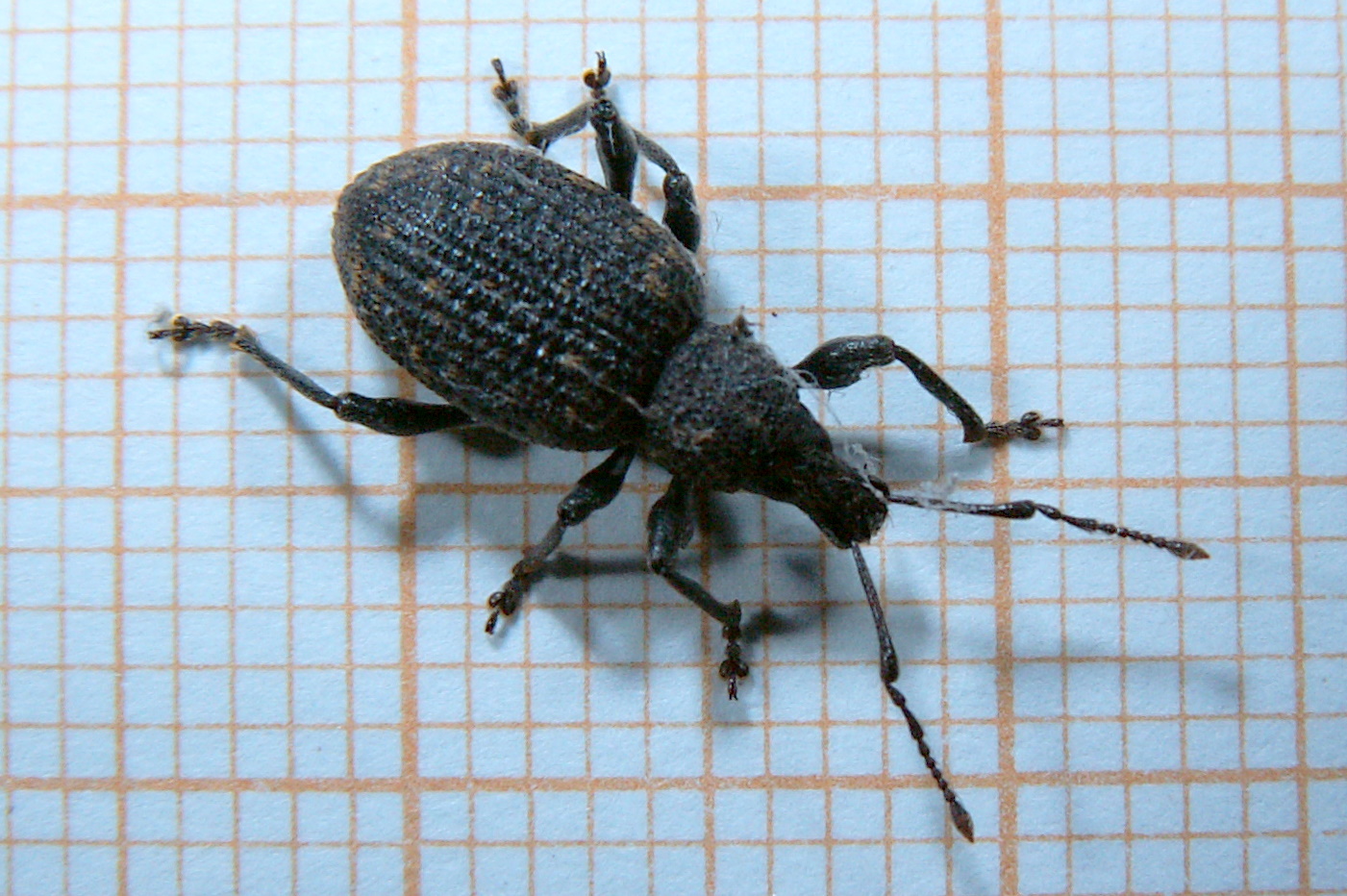
Black Vine Weevils Beetles belong to the Weevil family, which is a significant family of Curculionoidea of insects.
Mostly all the Weevils species are black in color and small-sized.
This Black beetle is a garden beetle that cannot fly because its wings are fused, and it uses its antennae to smell the plants the beetle must eat.
Identification
- This beetle measures up to 12mm long and feeds on plants like lilies, lilac, etc., and is native to North America as the famous garden pest.
- It does not bite humans and come inside your home. Instead, it destroys your backyard.
- It has a rectangular or elliptical body structure of gray or black color, with raised bumps on its body, a small thorax, and an even smaller but longer head along with two antennae.
8. American Oil Beetle

This beetle has a shiny black body bigger than its head and belongs to the Meloidae family group.
This beetle is also called ‘blister beetle’ because if you get stung by it, you can have skin blistering or harshness due to its chemical poison.
It is also known as the Oil beetle because it emits an oil-like substance wherever it passes.
Identification
- This beetle measures up to 30mm, is one of the largest beetles, and moves very slowly on the plant. It feeds and does not fight with other insects, but it remains calm.
- It has an illuminating black shiny body bigger than its head and thorax. Its antennae are shaped like an upside-down- L’.
- You can quickly identify this beetle in your backyard.
9. Blister Beetle
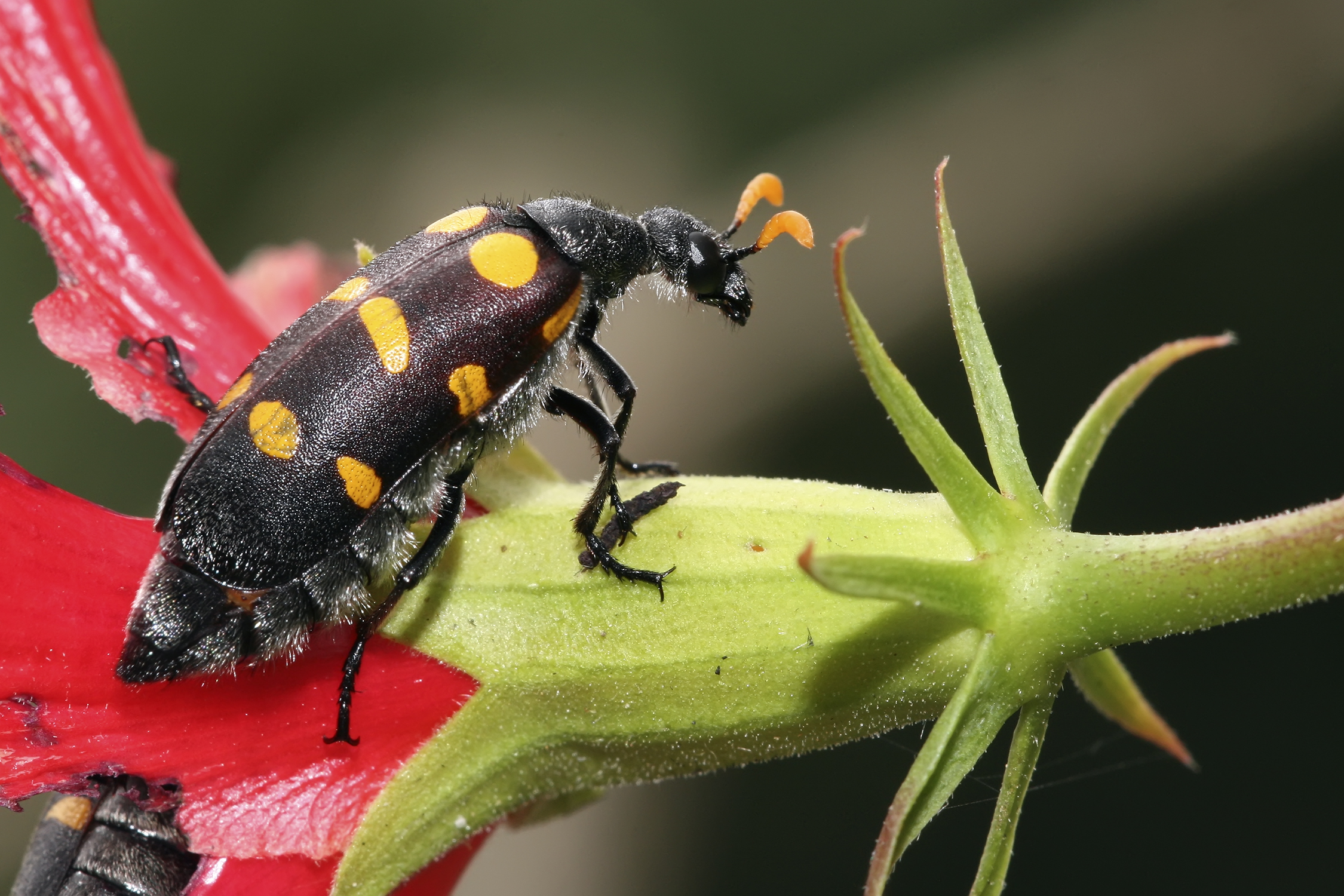
This beetle belongs to the Meloidae family of beetles, and they are called such because of their secretion of cantharidin, a blistering agent that can make your skin blister in a worse way.
One such dangerous blistering beetle is the Red and Black Blistering Beetle, commonly found in Central America and Southern USA.
Identification
- This beetle measures up to 10 to 15 mm, and it moves slowly.
- This beetle looks like a tiny armadillo. It does not fly but has two wing-like features wrapped around its thorax.
- This beetle has a humpbacked body that is in the shape of a tear.
- It has a relatively smaller head than its hard body, and red stripes can be seen around it.
10. Cedar Beetle

Coming from the Rhipiceridae family of insects, this is one of the flying, black-colored beetle.
They are also called ‘cicada parasite beetles’ because they feed on other bugs named Cicadoidea.
They like to wander around the elm trees, where the female Cedar beetles live.
The male beetles fly often during warm days and can look like a firefly, so do not get mistaken.
Identification
- This little measures up to 2 to 5 mm. Both the male and female beetles have reddish-brown to black color.
- However, the male beetles can be either black or light brown.
- It has an elongated body with shiny black wings.
- Their abdomen is orange, much like fireflies’, which can be seen when they fly around.
- Their antennae are short and feathery in males and toothed in females.
11. Rhinoceros Beetle
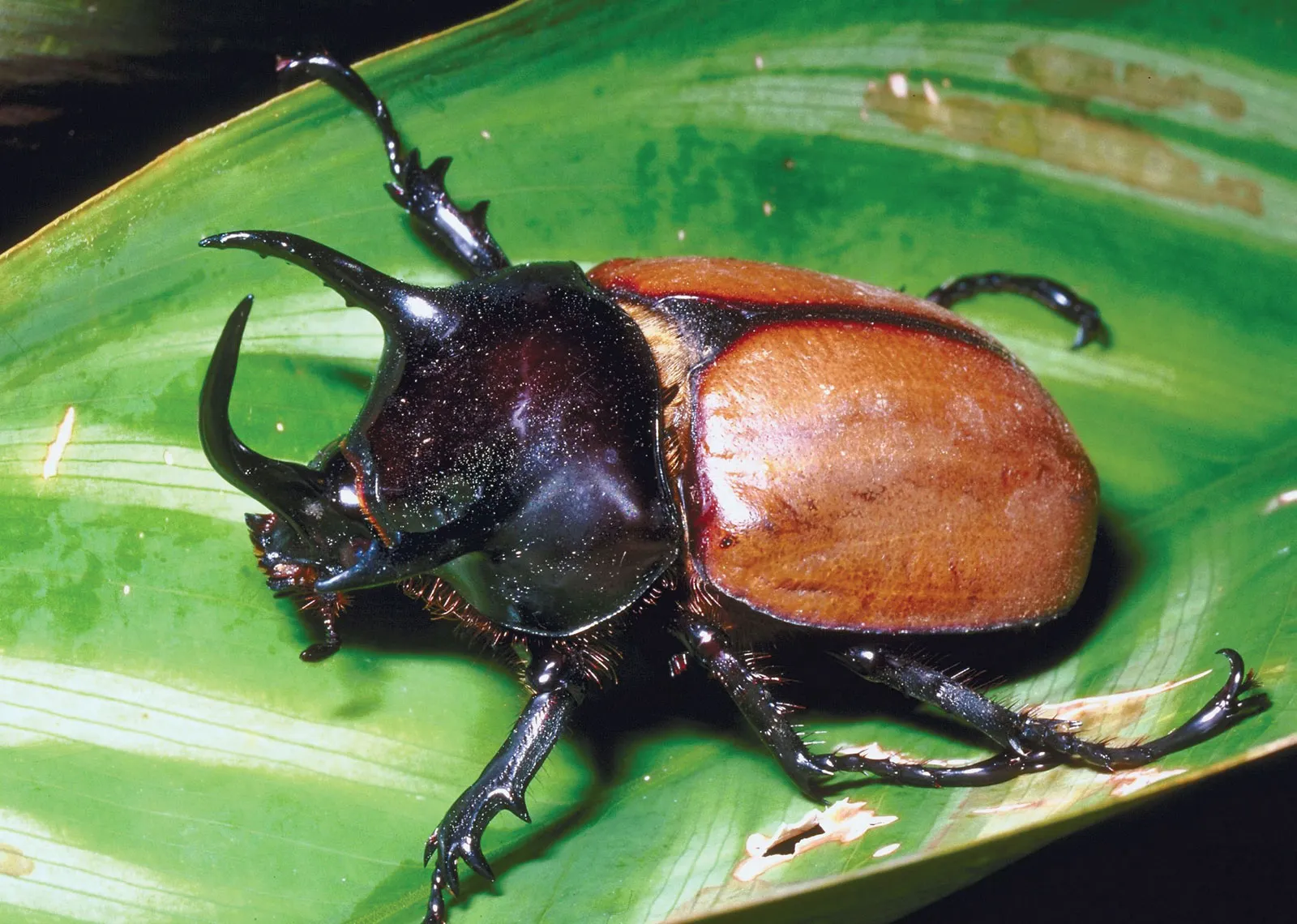
This is a vast, harmless beetle of dark brown color. It is also called a scarab beetle because it belongs to the Scarabaeidae family.
They are slow-moving beetles and feed on dead roots in the forests or in your yard.
They can fly, but you will mostly see them crawling around. They are also called the Unicorn beetle.
Identification
- This beetle grows up to 12 to 33 mm and is a shiny black beetle.
- It, however, moves quite slowly and does not fly around, although it has wings.
- You can quickly identify this beetle with the one horn on its head, which resembles a Rhinoceros.
- They have a shining, fat black body with an orange color underneath it, with a single horn that gives it a threatening look.
12. Black Stink Beetle
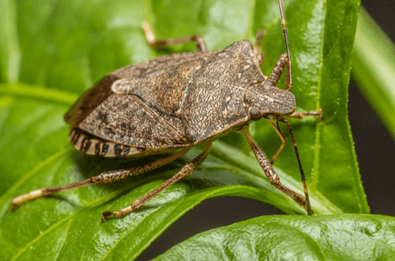
Coming from the species Eleodes, Stink Beetles are known as Pinacate beetles, which means black beetles.
When these beetles are threatened by any other insect or even by humans, they stand on their heads, representing a rather unusual behavior, and squirt out a stinking chemical, which is their defensive strategy. It leaves out a worse stinking smell.
Identification
- These beetles grow 25 to 30 mm long and can survive hot temperatures. They cannot fly and instead move slowly on their legs.
- Due to their stinking smell, they are called ‘stink bugs’ or ‘skunk beetles.
- A few stink beetles have black/brown, oblong bodies pointed towards the top, whereas a few have oval-shaped bodies with oval thorax and a tiny head.
- Both have long antennas, two pairs of legs attached to their abdomen, and two attached to their thorax.
13. Hermit Flower Beetle
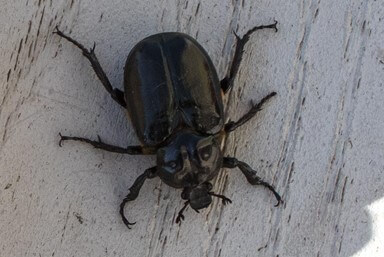
This scarab beetle is another type that only feeds on dead and decaying wood.
These beetles are quite beneficial and among the larger species of beetles.
They move slowly underneath the wooded areas, and at night, they are attracted to light and fly from one place to another.
These beetles smell disturbing; you can smell them from afar when they move.
Identification
- These beetles grow up to 30 mm. They do not have any spots or markings on their body but can be found mostly on flowers.
- They only feed on dead trees and nothing living.
- It has a shining black, fat, oval body and a hard shell. They also have a dimple between their eyes and on their thorax.
- You can also identify them by their stinking smell.
14. Pigweed Flea Beetle

Coming from the Chrysomelidae family, this is a slow-moving beetle.
It is an unusually colored beetle with red, black, and white colors present on its body.
This beetle is found in Eastern and Central North American regions, feeding on the Pigweed plants.
Their wings have yellow lines, two on the left and two on the right.
Identification
- This beetle grows up to 5 mm only. It is active from Late Spring to Autumn and should not be in your garden.
- It has an oval black body with white stripes, making it stand out on the leaves or in the forest.
- It also has a black and redhead, two large antennas, and six pairs of black and red legs.
Conclusion
The exploration of black beetle types unveils a rich tapestry of nature’s ingenuity and complexity.
Each beetle, from the Sawyer Beetle in North American pine forests to the Pigweed Flea Beetle in Eastern and Central North America, showcases a unique adaptation to its environment.
Their diverse characteristics, from the Stink Beetle’s foul odor to the Furniture Beetle’s destructive tendencies, remind us of the intricate ecological roles these creatures play.
Understanding these black beetles enhances our appreciation of biodiversity and the importance of each species in maintaining the balance of our natural world.
This guide serves as a window into the fascinating realm of black beetles, inviting us to observe and respect our planet’s small but significant inhabitants.

